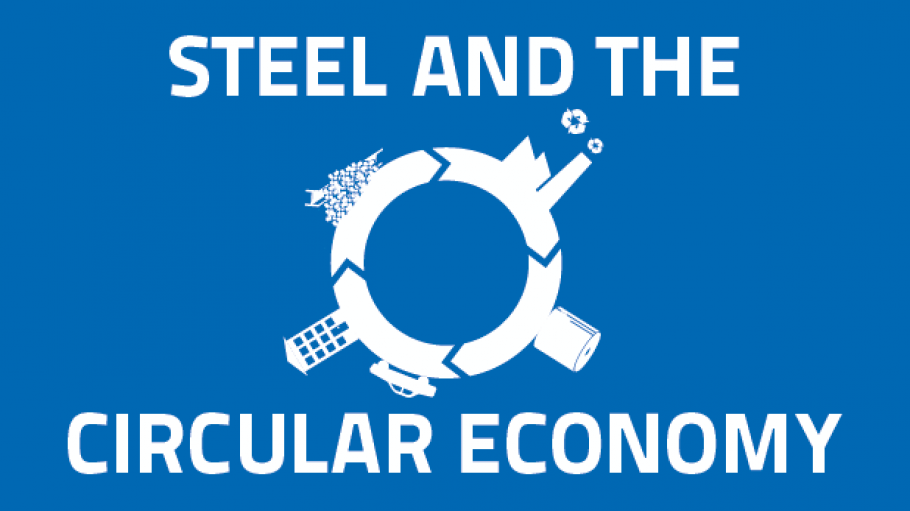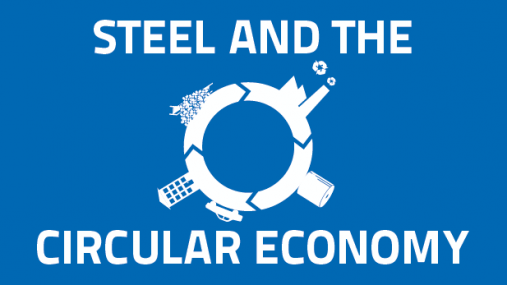
Publications » Brochures, booklets or fact-sheets » Steel and the circular economy
Steel and the circular economy
Downloads and links
Recent updates

Shaping the circular economy is an ongoing challenge. Achieving this objective is not possible without steel. The European Commission is expected to publish a package with proposals on the Circular Economy towards the end of 2015. This package will explain how the EU intends to deal with the need to transform Europe into a more competitive resource-efficient economy, addressing a range of issues, including reuse, recycling, and waste treatment.
Steel is a 100% recyclable, ‘permanent’ material, which loses none of its unique properties when properly processed. The European steel industry works hard to ensure that the steel it produces can be reused, recovered, and recycled. It also ensures that steel production’s by-products, such as slags and process, gases are put to the best possible uses.
The brochure provides recommendations to policy makers dealing with issues arising in the circular economy for the steel industry. It shows that steel can help mitigate CO2 emissions and help reduce product lifecycle emissions. Steel’s characteristic as a ‘permanent’ material means it can be easily reused and subsequently recycled in a constant loop.
To this end, the brochure proposes that the recycling definition in the EU’s waste legislation be adapted to properly meet the aspirations of the circular economy. Finally, it demonstrates the large degree to which steel production retains as much of the material created during steel production and is able to make use of its by-products.
As part of its commitment to underpinning the circular economy, the steel industry is constantly working on cleaner, resource-efficient solutions – as well as on an ever-expanding range of steel grades – ensuring that the average 170 million tonnes of steel it produces every year are ever more sustainable, useful and environmentally friendly.

Download this publication or visit associated links
Brussels, 27 November 2024 – The European steel industry is at a critical juncture, facing irreversible decline unless the EU and Member States take immediate action to secure its future and green transition. Despite repeated warnings from the sector, the EU leadership and governments have yet to implement decisive measures to preserve manufacturing and allow green investments across Europe. Recent massive production cuts and closure announcements by European steelmakers show that time has run out. A robust European Steel Action Plan under an EU Clean Industrial Deal cannot wait or manufacturing value chains across Europe will simply vanish, warns the European Steel Association.
Brussels, 12 November 2024 - Ahead of Commissioner-Designate Séjourné’s hearing in the European Parliament, European steel social partners, supported by cross-party MEPs, jointly call for an EU Steel Action Plan to restore steel’s competitiveness, and save its green transition as well as steelworkers’ jobs across Europe.
Brussels, 29 October 2024 – The European steel market faces an increasingly challenging outlook, driven by a combination of low steel demand, a downturn in steel-using sectors, and persistently high import shares. These factors, combined with a weak overall economic forecast, rising geopolitical tensions, and higher energy costs for the EU compared to other major economic regions, are further deepening the downward trend observed in recent quarters. According to EUROFER’s latest Economic and Steel Market Outlook, apparent steel consumption will not recover in 2024 as previously projected (+1.4%) but is instead expected to experience another recession (-1.8%), although milder than in 2023 (-6%). Similarly, the outlook for steel-using sectors’ output has worsened for 2024 (-2.7%, down from -1.6%). Recovery projections for 2025 are also more modest for both apparent consumption (+3.8%) and steel-using sectors’ output (+1.6%). Steel imports share rose to 28% in the second quarter of 2024.